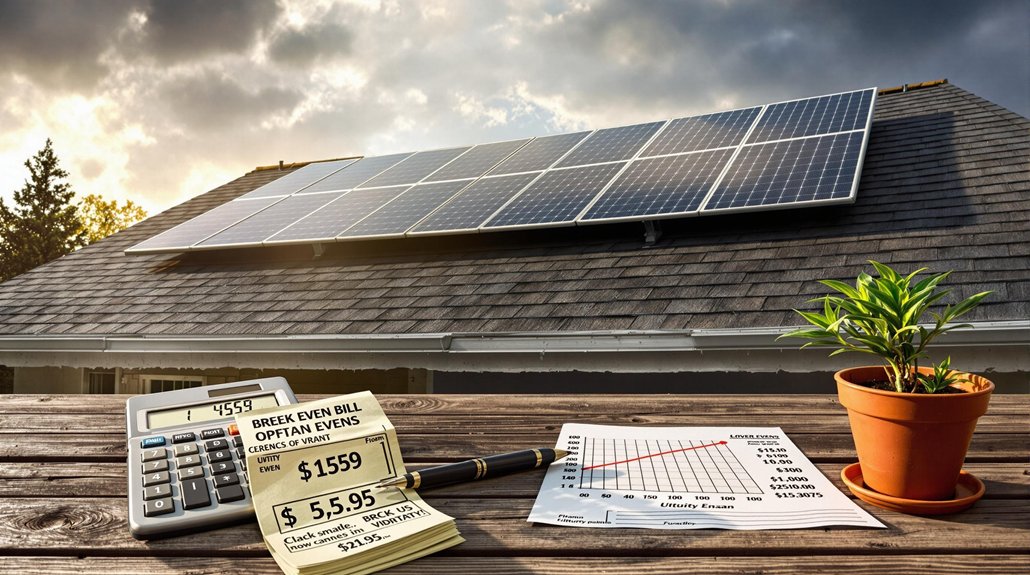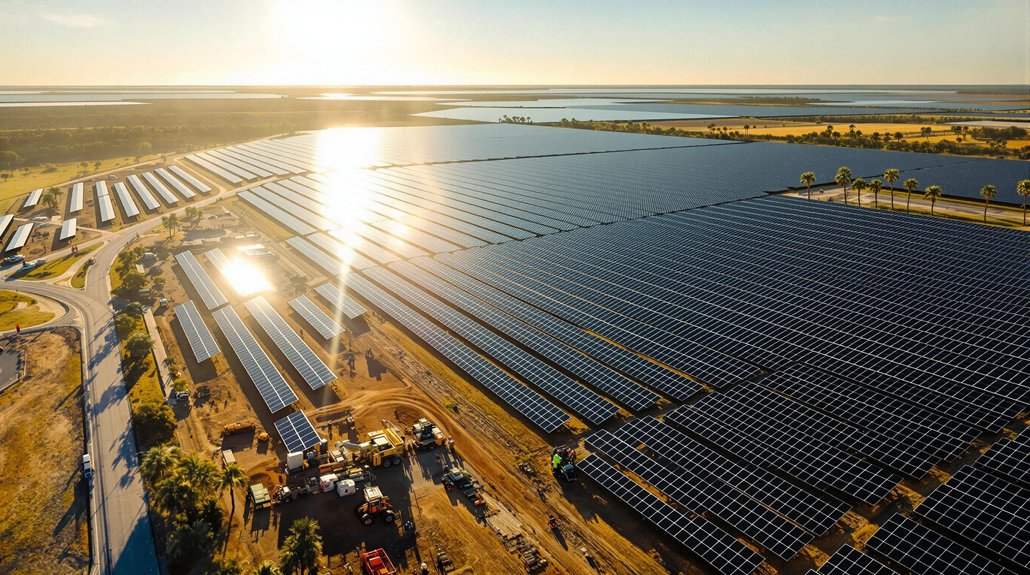Solar installations rarely deliver on their hyped financial promises. Most homeowners see 7-10 year payback periods, not the 5 years salespeople pitch. A typical $20,000 system (minus tax credits) eventually saves $1,200 annually—nothing to sneeze at, but hardly revolutionary. Maintenance costs and panel degradation eat into profits. The environmental benefits? Substantial. Property value boost? Real. But that instant money-making miracle machine? Yeah, right. The numbers tell a different story.
Why do homeowners continue to pour money into monthly electric bills when a one-time investment could slash costs for decades? The answer isn’t as sunny as solar salespeople suggest. The average American shells out $15,000 to $25,000 for residential solar systems. Not pocket change. Sure, prices have plummeted 70% since 2010, but the initial sting remains sharp.
The solar paradox: a financial mountain to climb before enjoying the view of decades without electric bills.
Let’s be brutal about numbers. Most households save between $600 and $1,800 annually on electricity bills. Do the math. That’s a 7-10 year payback period on average. Some lucky homeowners in electricity-expensive states see returns in 5 years. Others? Stuck waiting 15 years before breaking even. Hardly the “instant savings” that glossy brochures promise.
The 30% federal tax credit helps. So do state incentives that can knock off another 10-20%. But still. Fifteen grand minimum upfront? For many families, that’s a tough pill.
The environmental impact is undeniable, though. The average system offsets 100,000 pounds of carbon dioxide throughout its lifetime. Equivalent to planting 2,000 trees. Not bad for some silicon on your roof.
Maintenance isn’t free either. Annual costs average $150-$300. Inverters often need replacement after a decade. The panels degrade 0.5-1% yearly. Death, taxes, and solar degradation—all inevitable.
The ROI eventually materializes—10-20% annually after the payback period. Better than many investments. Property values increase 3-4% with installation. Net metering allows selling excess energy back to the grid. Not terrible.
For homeowners playing the long game, solar makes financial sense. For quick returns? Look elsewhere. Solar is a marathon, not a sprint. After the 7-10 year payback period, two decades of fundamentally free electricity follow. The panels continue producing long after breaking even. Calculating your home’s specific energy needs based on your average annual consumption is crucial for determining the right system size and potential savings. A thorough cost benefit analysis will evaluate both initial installation expenses and long-term energy savings. Homes with solar installations typically enjoy a property value increase of 4.1% compared to non-solar counterparts.
The raw truth? Solar works financially—eventually. Just don’t expect overnight miracles from those roof panels.









